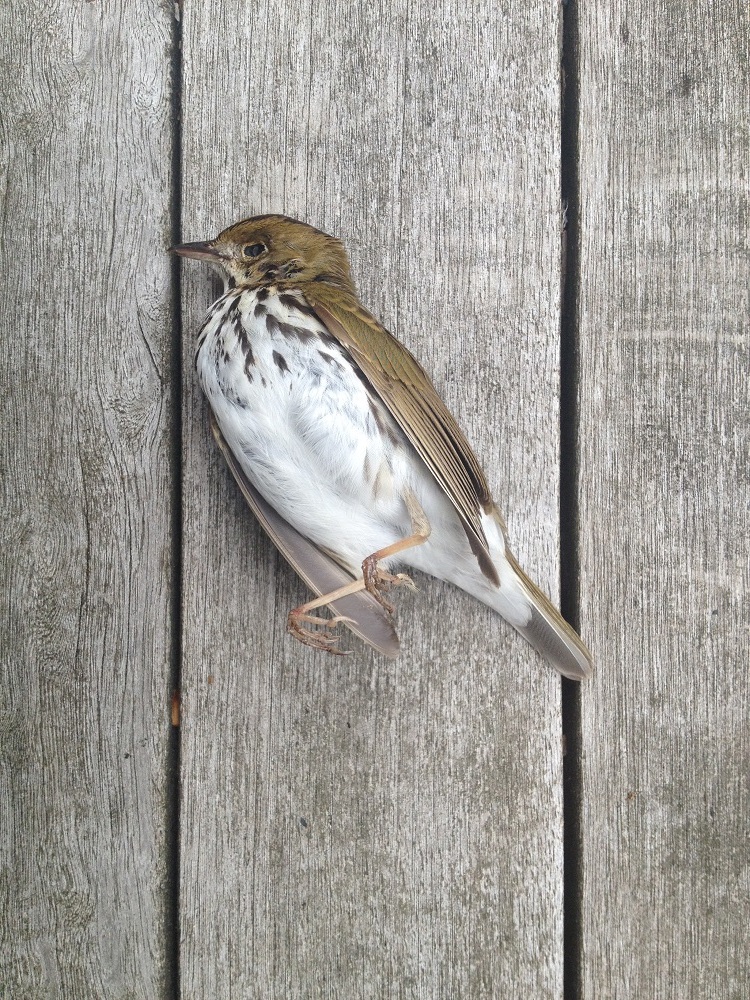My wife found the ovenbird lying dead on the ground last week beneath a shiny double-glazed window; a sad end unbefitting an epic life. Of the countless number that will meet a similar fate this year, I mourn not their passing, but the manner of it. Such a life deserves more than an anonymous and avoidably tragic end. Consider the manner of his death with the manner of his life. He spent the winter somewhere in the Caribbean, perhaps in the montane forests of Jamaica’s highlands, with parrots and exotic hummingbirds for company. He began his northward journey in April, lifting off at dusk to make the 100-mile flight to Cuba. Less than a month ago, flying north across a Cuban landscape of sugar cane and tobacco, vintage American cars, and red clay roof tiles, he made the final ocean crossing to the Florida Keys. By the time he arrived in Hancock in early May, he would have encountered dramas that I can only imagine, dodging hawks and falcons, cats and cars, cell towers and wind turbines. By the thinnest of margins he made it alive to Hancock. Then he flew into my window.
Recent research, cited in a New York Times article of May 13, estimates that, nationwide, 365 million to 988 million birds die annually after crashing into buildings and houses. Fordham University, New York City Audubon, and the American Bird Conservancy are engaged in a collaborative effort to develop “bird friendly” glass to prevent just these sorts of events. Scientists are testing birds’ ability to see various types of glass; panels with embedded white stripes, panels with black stripes, panels with horizontal stripes vs. vertical stripes, and panels with ultraviolet reflective coating invisible to humans. The results so far are positive, especially with respect to ultraviolet technology. The latter may also have a role to play in reducing bird strikes at wind turbines. New Hampshire Audubon is pursuing research in this area.
I am optimistic that the work outlined by the NYT will eventually bear fruit, but given the volume of bird deaths per year, consider taking some steps now to lessen the chances that birds will fly into your windows. The American Bird Conservancy outlines some practical solutions, especially relevant if you have a window that is a serial offender. The key is to apply visible markings that will alert birds to the windows presence. Tempera paint (available at art supply stores) is non-toxic and comes off easily with a sponge. Choose your own pattern, or buy a stencil (available at michaels.com). Tape will work just as well. I use hawk shaped decals with success. More information is available at the American Bird Conservancy http://www.abcbirds.org/abcprograms/policy/collisions/pdf/collisions_flyer.pdf
And if you find a dead bird, check to see if it has a leg band. You can report the number to reportband.gov.

4 Responses to “Birds and Windows – epic journey ends in tragedy”